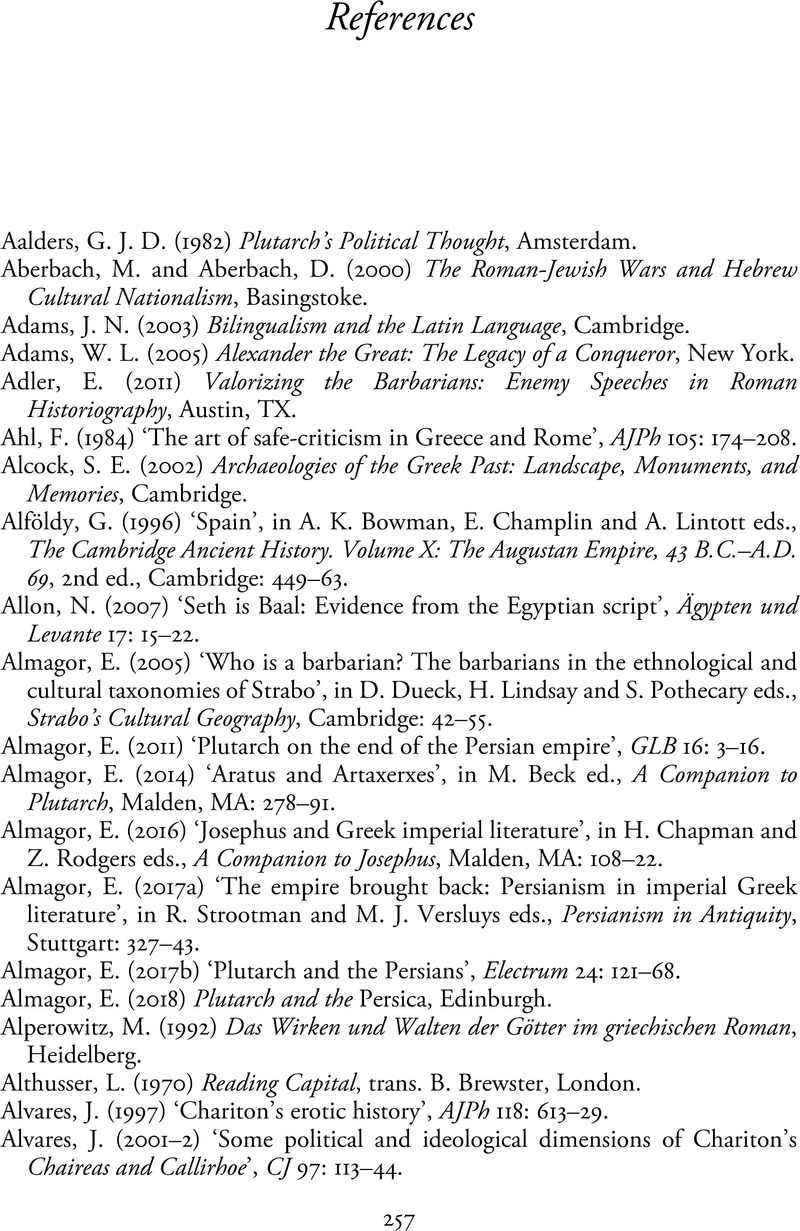Book contents
- Articulating Resistance under the Roman Empire
- Articulating Resistance under the Roman Empire
- Copyright page
- Contents
- Contributors
- Acknowledgements
- Abbreviations
- Introduction Articulating Resistance
- Part I Language and Identity
- Part II Genres of Literary Resistance
- Part III Identity Negotiation
- Part IV Religion and Resistance
- References
- Index
- References
References
Published online by Cambridge University Press: 23 December 2022
- Articulating Resistance under the Roman Empire
- Articulating Resistance under the Roman Empire
- Copyright page
- Contents
- Contributors
- Acknowledgements
- Abbreviations
- Introduction Articulating Resistance
- Part I Language and Identity
- Part II Genres of Literary Resistance
- Part III Identity Negotiation
- Part IV Religion and Resistance
- References
- Index
- References
Summary

- Type
- Chapter
- Information
- Articulating Resistance under the Roman Empire , pp. 257 - 296Publisher: Cambridge University PressPrint publication year: 2023

